
Aerosentinel - Integrated Flight System
The Aerosentinel IFS is a groundbreaking project that embodies innovation, precision, and ambition in the field of rocketry and aerospace technology. This system integrates advanced navigation, flight control, and communication modules, ensuring a seamless and efficient operation from launch to recovery.
Project Overview
This project is designed to push the boundaries of amateur rocketry and demonstrate the capabilities of modern aerospace technology. It comprises three core modules, each meticulously engineered to perform specific functions critical to the success of the mission.
Core Components
● Aerosentinel Argus: Navigation Module:
Inspired by Argus, the vigilant guardian of Greek mythology, the Aerosentinel Argus provides critical
navigation data.
This navigation module integrates multiple IMUs, barometers, and magnetometers, coupled with a GPS
unit
to offer precise
and reliable navigation. Its advanced sensor fusion algorithm ensures accurate trajectory tracking and
real-time adjustments.
● Aerosentinel Icarus: Flight Module:
Named after Icarus, the mythological figure known for his ambitious flight, the Aerosentinel Icarus
module is the brain of the system.
It is responsible for managing and controlling flight dynamics. This module ensures stability and
optimal performance throughout the flight,
utilizing state-of-the-art flight control algorithms to adapt to various in-flight conditions.
● Aerosentinel Echo: Communication Module:
Taking inspiration from Echo, the nymph associated with sound and communication, the Aerosentinel Echo
module guarantees reliable signal
transmission and reception. This module enables seamless communication between the rocket and the
ground
station,
ensuring that telemetry data is continuously relayed and that control commands are promptly executed.
● Aerosentinel Orion: The Rocket:
The heart of the system, the Aerosentinel Orion, is the rocket that carries these modules to the
skies.
With its sleek design and robust construction, Orion is built to withstand the rigors of high-speed
flight
and challenging environmental conditions. It serves as the perfect platform to showcase the
capabilities
of Argus, Icarus, and Echo modules.
Vision and Goals
The Aerosentinel Full Rocket System is not just about launching a rocket; it's about demonstrating a
fully integrated aerospace solution
that combines hardware, software, and communication into a cohesive system. My goals include:
● Innovation: To continuously push the boundaries of what's possible in amateur
rocketry.
● Education: To inspire and educate the next generation of engineers and scientists.
● Collaboration: To foster a community of passionate individuals dedicated to advancing
aerospace technology.
Deep Dive : Aerosentinel Argus
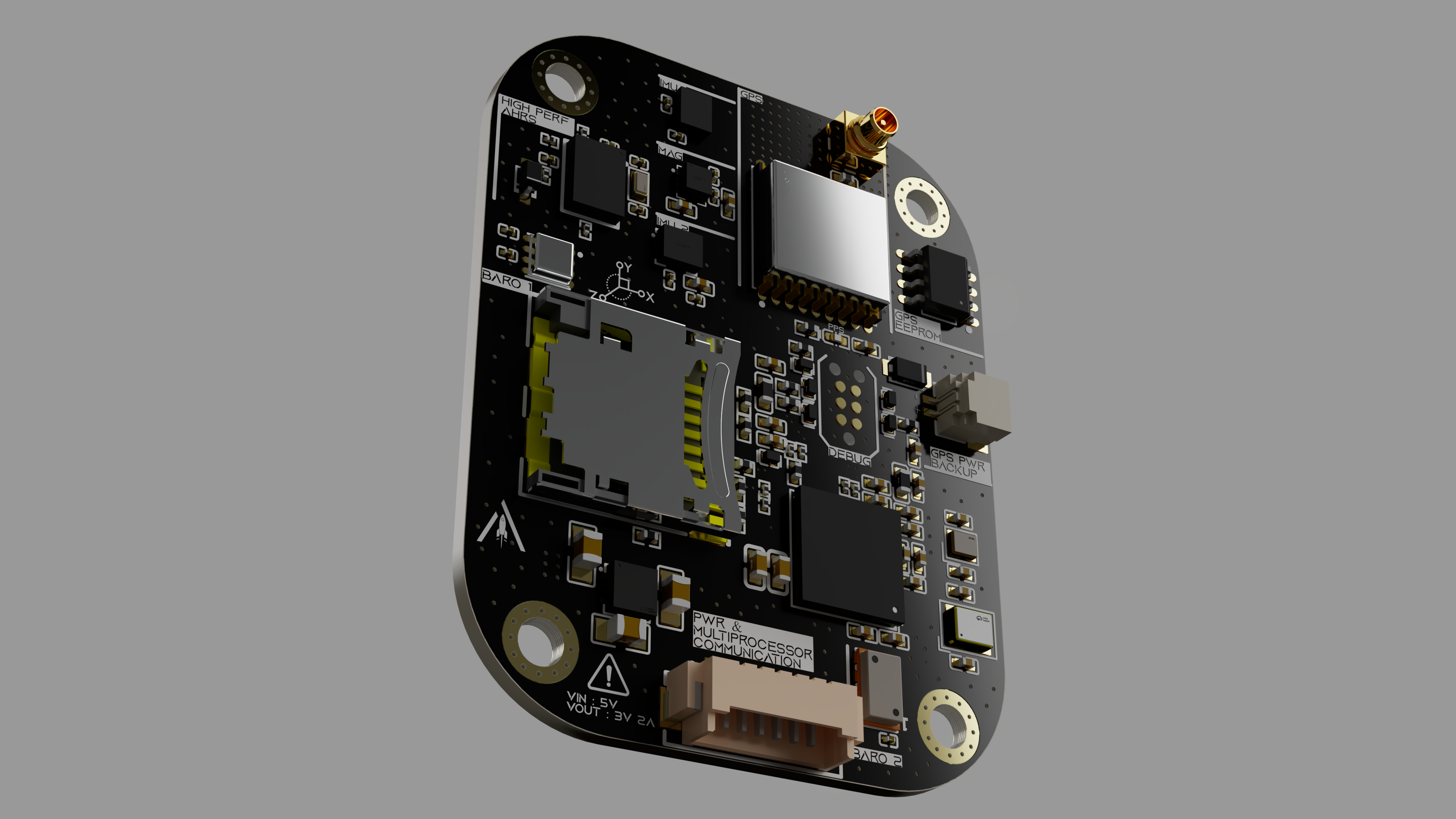
The Argus Module is responsible of the telemetry measurement, storage and execution of sensor-fusion
algorithms.
It communicates fusionned data to Icarus so it can make the appropriate real time decisions in
flight.
But what makes Argus so special? Here's why :
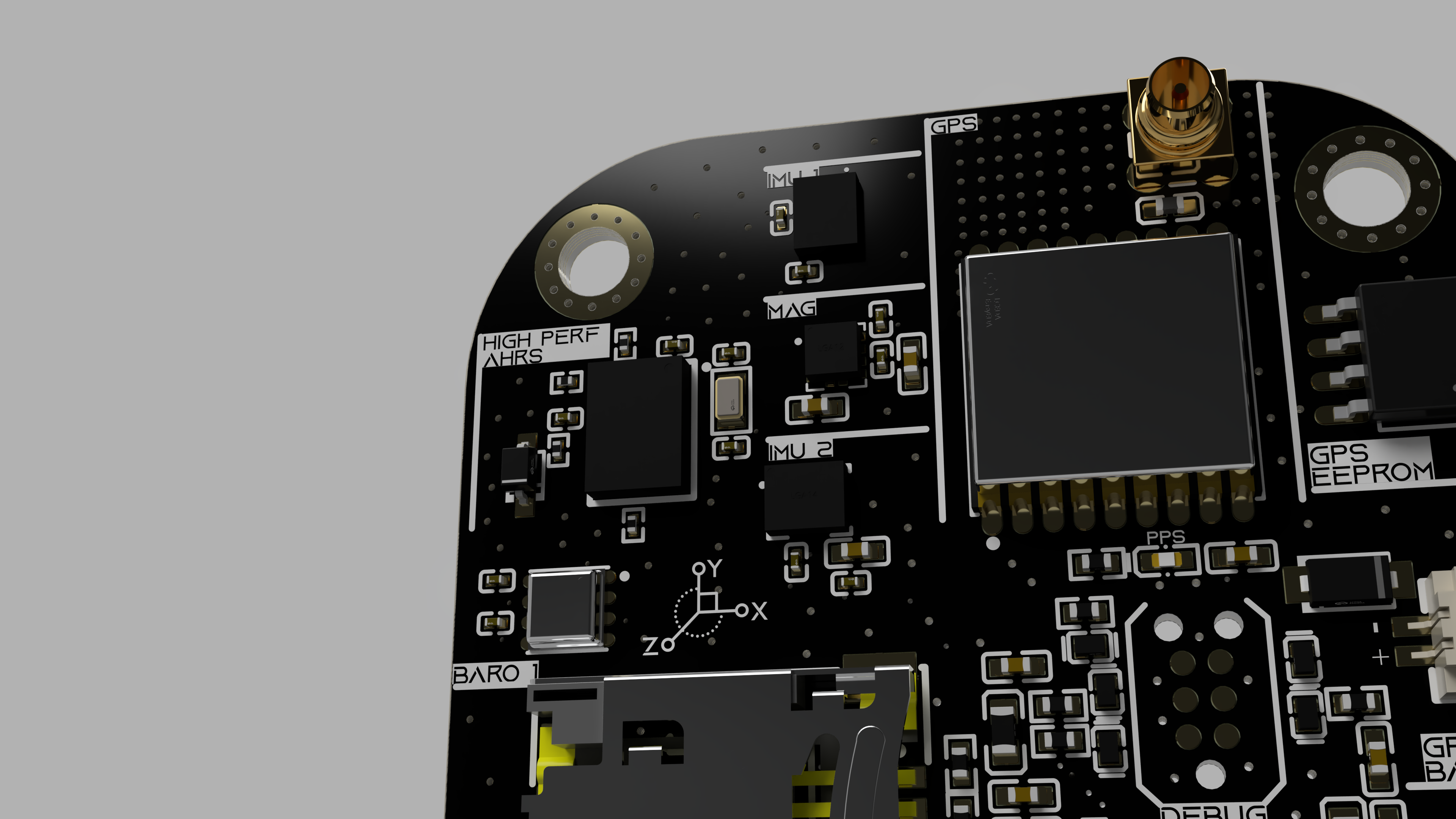
Sensors : The module integrates multiple IMUs, barometers, and magnetometers. These sensors work together to provide accurate measurements, essential for precise navigation.
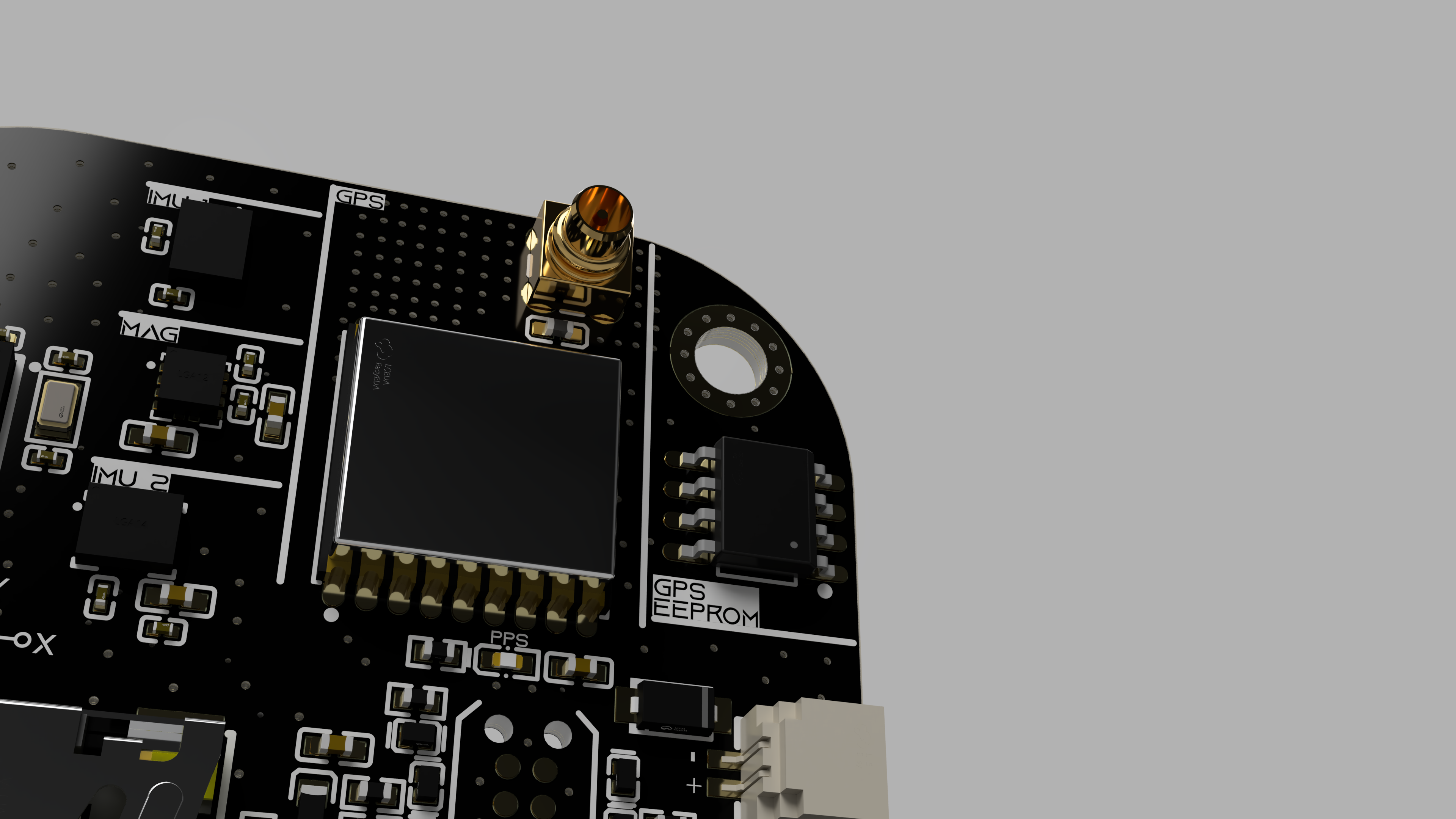
Global Positionning System : Equipped with high-precision GPS, Argus ensures accurate positioning and navigation data.
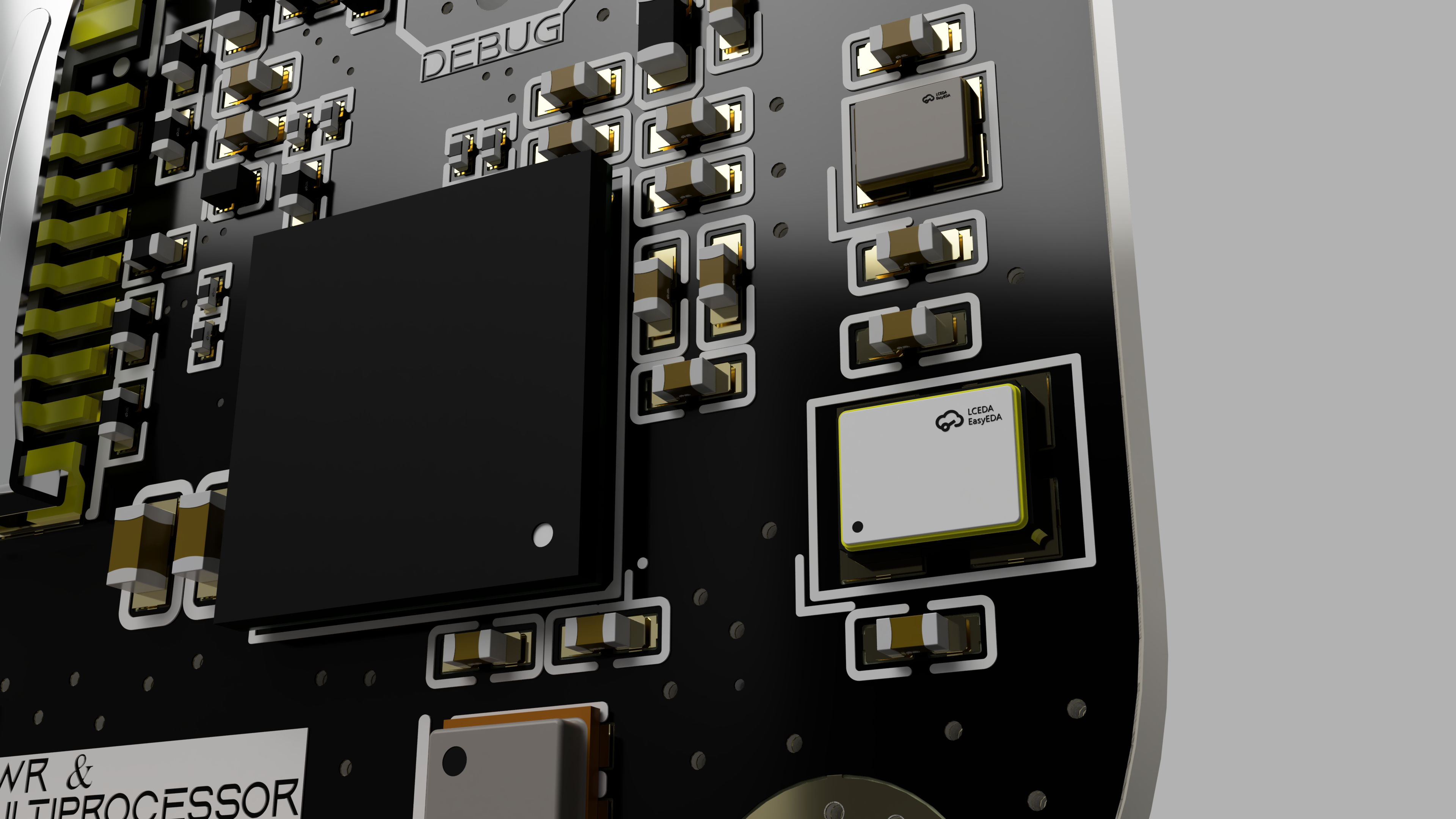
Processing Unit : Equipped with a powerful STM32 (H7 family), it ensures large computation capabilities for Unscented Kalman Filters.

Debug probe : With a Tag-Connect probe, debugging gets so much easier and eco-friendly (less connectors, less pollution).
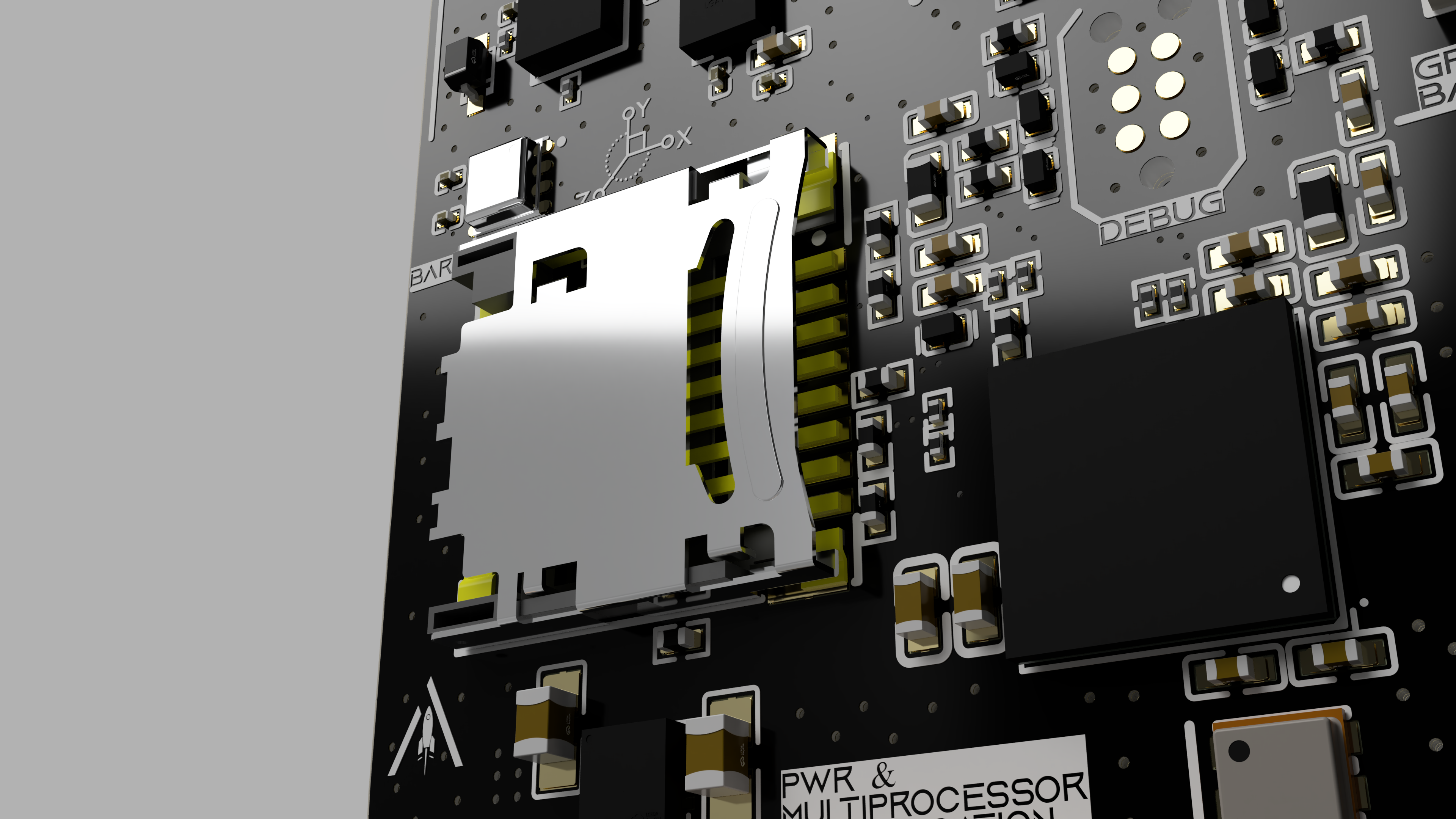
Black Box : This modules embeds a black box logging capability through an SDMMC port (up to 128Gb). The data will be safely stored and encrypted.

Multiprocessor Communication : This connector will both power the module and let it communicate to the rest of the ecosystem using A.R.P (Aerosentinel Relay Protocol), via USART.
The Argus Firmware
With great power comes great responsibility.
The Argus firmware is the cornerstone of the Aerosentinel Argus Navigation Module,
designed to integrate and process data from multiple sensors with high precision.
The firmware is structured to ensure robust performance, real-time data processing,
and seamless communication within the system.
Below is an overview of its architecture.
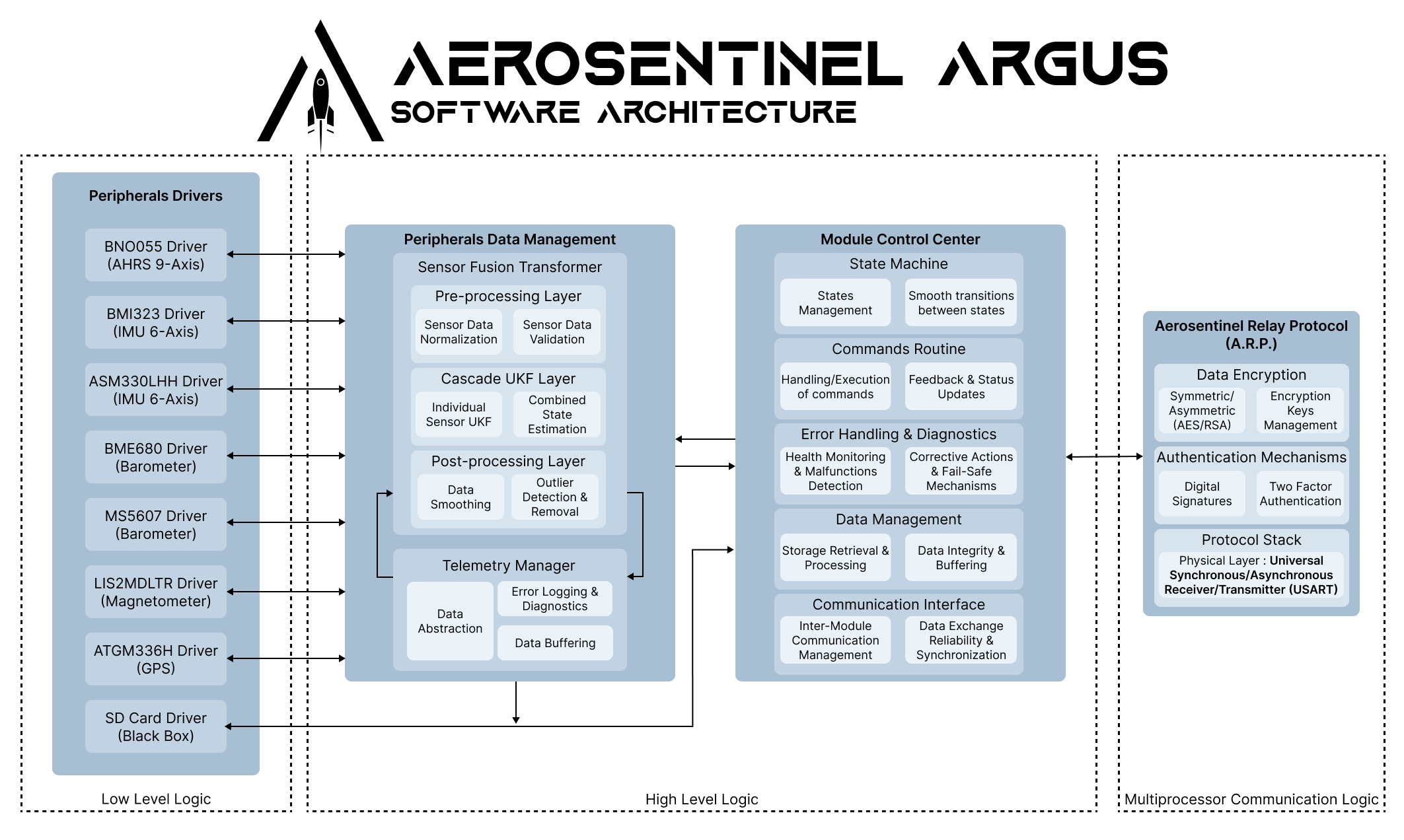
● Peripherals Drivers:
This layer handles the interface with various sensors, ensuring
that data is accurately read and transmitted for processing.
● Peripherals Data Management:
Responsible for pre-processing, validating, and fusing
sensor data. Advanced algorithms like the Cascade Unscented Kalman Filter (UKF) are used for state
estimation and sensor fusion, enhancing the accuracy and reliability of navigation data.
● Module Control Center:
Manages the overall operation of the module, including state
management, command execution, error handling, and data management. This ensures that the system can
adapt to different conditions and maintain optimal performance.
● Aerosentinel Relay Protocol (A.R.P.):
Facilitates secure and reliable communication
between modules using proprietary protocols and encryption methods.
The firmware is designed to be highly modular, allowing for easy updates and integration with other
components of the Aerosentinel system. For those interested in the detailed implementation and
codebase,
the entire code is available on GitHub.
Argus Project Status
Note : The Rev 1 board presents some harware issues (not critical), that have already been
solved for the Rev 2 board.
Once the Field testing phase is completed successfully, I'll finalize the improvements and
send the Rev 2 board to production. Overall the module behavior is really promising!!
Deep Dive : Aerosentinel Icarus
Icarus Project Status
Note : The Icarus Module production will start after the final validation of the Argus
Module
Deep Dive : Aerosentinel Echo
Echo Project Status
Note : The Echo Module production will start after the final validation of the Icarus
Module
Deep Dive : Aerosentinel Orion
Orion Project Status
Note : The Orion rocket is currently on research phase.